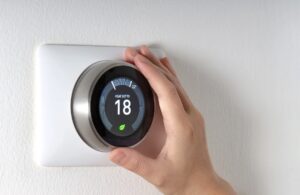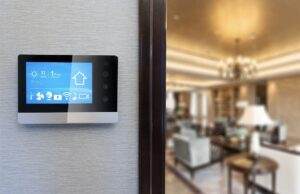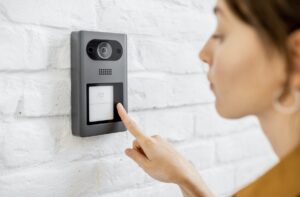What Shapes the Trends?
In the domain of residential electrical technology, several elements stand as significant contributors to current trends. Firstly, the demand for greater efficiency, driven by escalating utility costs and increasingly eco-conscious consumers, is a significant game-changer. Secondly, the growing availability of connected devices forges several trends in this sector.
Moreover, sustainability is a significant influencing factor. Strategies and technologies that harness renewable energy sources, decrease carbon footprints, and minimize waste production are on the rise.
10 of the Best Residential Electrical Technology Trends
The quest for energy efficiency and automation in the residential sector introduces several technological advancements. Among these, smart thermostats and automated lighting systems stand out due to their direct impact on energy conservation and ease of use.
Smart Thermostats

Smart thermostats take the lead in residential electrical innovations by offering double benefits; energy-efficiency and automation. They’re not merely temperature control devices; they’re central to efficient home comfort systems.
Incorporating advanced features like learning abilities, these thermostats adapt to homeowners’ routines, learning when to dial down energy use and when to ramp up.
Take the example of Nest Learning Thermostat; it saves an average of 10-12% on heating bills and about 15% on cooling bills according to the company’s claims.
Automated Lighting Systems
Similarly, automated lighting systems take a significant leap in residential electrical technology. These systems offer homeowners the ability to control lighting at their convenience, from dimming lights to scheduling on-off times, enhancing comfort while concurrently promoting energy efficiency. Consider the Philips Hue system, a product appreciated for its ability to sync with sunrise and sunset times, adjust light intensity and even chromaticity to match the day’s rhythms. Not only do these automated systems attribute to substantial energy savings, but they also enhance the aesthetic appeal and safety of homes.
Smart Smoke Detectors
Smart smoke detectors, like the Google Nest Protect, revolutionize the sphere of home safety. Unlike traditional smoke alarms, these devices offer real-time alerts and notifications. With a smart smoke detector, one isn’t only alerted when smoke or carbon monoxide levels rise in their house, but also through their smartphones, irrespective of their geographical location. Another example includes the First Alert Onelink, which integrates seamlessly with home automation systems, enhancing both safety and convenience.
Advanced Security Systems

Taking a stride beyond traditional surveillance, advanced security systems heighten the levels of home security, ensuring peace of mind for homeowners.
Home security systems, such as the SimpliSafe 8 Piece Wireless Home Security System, provide comprehensive protection, employing a diverse array of technologies.
Equipped with multiple sensors, an alarm, and a surveillance camera, these systems blanket homes with security.
Solar Power Systems
Solar power systems stand out among renewable energy options owing to their ease of integration and considerable energy savings. Homeowners recognize the practicality and financial incentives of this alternative, prompting the rise in residential solar panel installation. With optimal conversion of sunlight into electricity, they drastically reduce dependence on utility grids and consequently, electricity bills.
Battery Storage Innovations
Battery storage innovations further enhance the benefits of renewable energy sources such as solar power, aiding in seamless energy management and backup. High-performing batteries store excess energy generated during peak sunlight hours, releasing it as needed, especially during utility grid downtime. For example, Tesla’s Powerwall boasts a high energy density, enabling long-duration discharge and offering dependable electricity supply during power outages.
Integration with IoT Devices
IoT device integration ranks high among smart home trends. It involves merging varying technologies into a singular system for an efficient and interactive home experience. For instance, IoT connects smart thermostats to automated lighting systems, creating a perfect harmony between temperature and light for optimized energy usage.
Voice-Controlled Assistants
Another exciting development within smart home ecosystems is the arrival of voice-controlled assistants.

These virtual helpers, such as Amazon’s Alexa or Google Home, grant homeowners the convenience of managing multiple facets of their homes through simple spoken commands. A user could adjust room temperatures, control lights, or even secure the home, all by voice. This technology enhances a homeowner’s day-to-day living, making it effortless and efficient.
Residential electrical technology’s future shines bright with the advancements discussed.
Smart home automation and energy-saving devices are revolutionizing homes, making them more efficient and sustainable. These trends are not just changing homes; they’re changing lifestyles, making them more efficient, sustainable, and secure.

